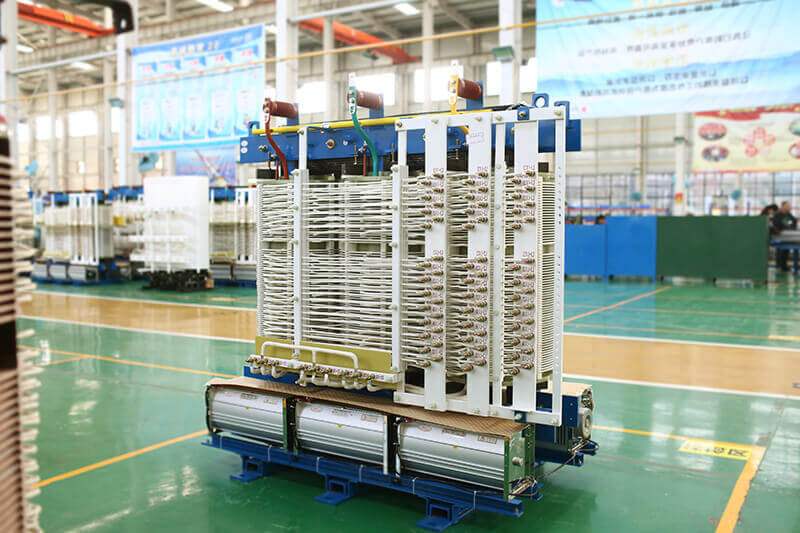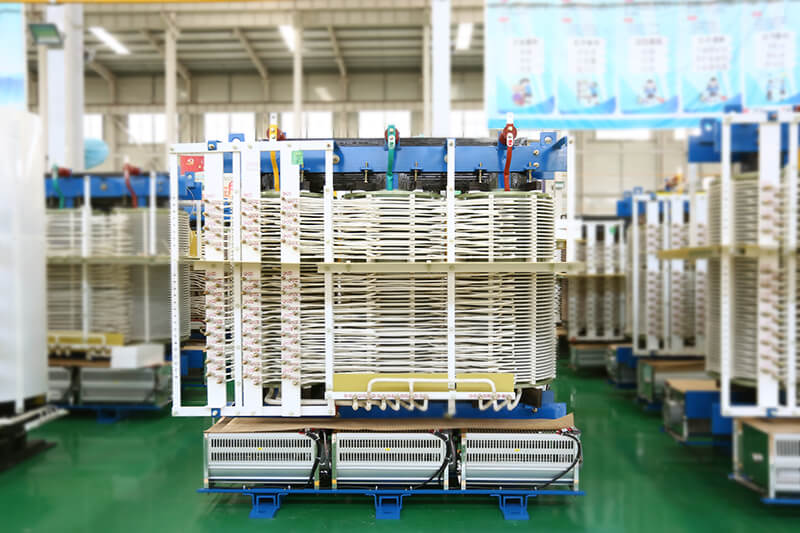I. Electrochemical Industry
This is an industry that uses rectifier transformers. It electrolyzes non-ferrous metal compounds to produce aluminum, magnesium, copper and other metals; electrolyzes salt to produce chlor-alkali. Electrolyzes water to produce hydrogen and oxygen.
II. DC power supply for traction
DC grid for mine or city electric locomotive. Because the overhead line is connected to the valve side, there are many short-circuit faults, the radiated DC load changes greatly, and the electric locomotive often starts, resulting in short-term overload of varying degrees. For this reason, the temperature rise limit and current density of these transformers have achieved low. The impedance is about 30% greater than the corresponding power transformer.
III. DC power supply for transmission
Rectifier transformers mainly used to supply DC motors in electric drives, such as armature and excitation of rolling mills.

4. For DC transmission
The voltage of this type of rectifier transformer is generally above 110kV, and the capacity is tens of thousands of kilovolt-amperes. Pay special attention to the AC and DC superposition of the ground insulation.
Rectifier transformer is the power transformer of rectifier equipment. The characteristics of the rectifier equipment are that the primary side inputs AC, and the secondary side outputs DC after passing through the rectifier element. The transformer used as the power source of the rectifier is called a rectifier transformer. Most of the rectified DC power supplies used in industry are from the AC grid through rectifier transformers and rectifier equipment.
Features:
1 Rectifier transformers the appropriate voltage for the rectifier system;
2. Rectifier transformers is to reduce the waveform distortion caused by the rectification system to the power grid pollution.

In the field of applied rectification and variability, high-power rectifiers also have low secondary voltages and large currents, so they are similar to electric furnace transformers in many aspects. The structural feature points described above also have rectifier transformers. The rectifier transformer is characterized in that the secondary current is not a sinusoidal AC. Due to the unidirectional conduction characteristics of the subsequent rectifier components, the phase lines are no longer simultaneous and the load current is flowing, but the soft current is conducted. The pulsating current in one direction is changed to DC by the filtering device. The secondary voltage and current of the rectifier transformer are not only related to the capacity connection group, such as commonly used three-phase bridge rectifier lines, double-reverse rectifier lines with balanced reactors, rectifier transformers required for the same DC output voltage and current. However, the secondary voltage and current are not the same, so the parameter calculation of the rectifier transformer is based on the rectifier line. Generally, the parameter calculation is calculated from the secondary side to the primary side.
Because the winding current of the rectifier transformer is non-sinusoidal and contains many high-order harmonics, in order to reduce harmonic pollution to the power grid, in order to improve the power factor and to increase the pulse wave number of the rectifier equipment. This can be solved by phase shifting. The purpose of phase shift is to make a phase shift between the same-named terminal line voltages of the secondary winding of the rectifier transformer.

.jpg)
